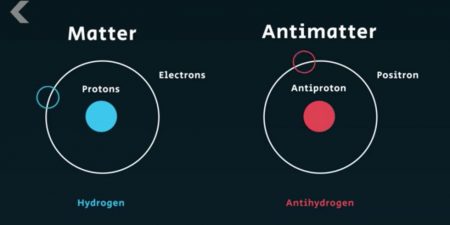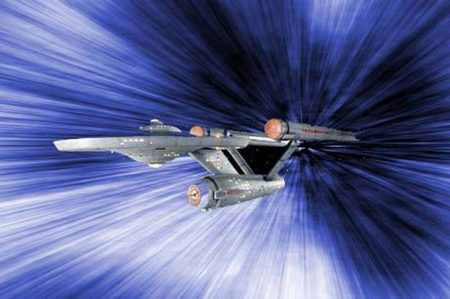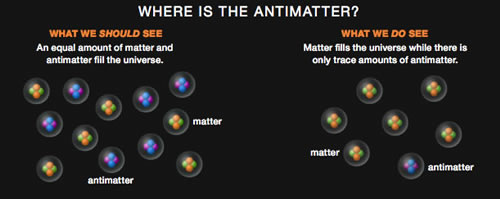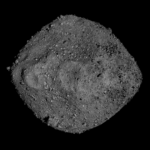August 24, 2017 – It sounds like science fiction every time a physicist starts talking about antimatter. That’s the stuff that when combined with matter could annihilate all that matters to us. In every atom for every proton, and electron there exists a hidden world of antiprotons and antielectrons. Hydrogen, the simplest of atoms, one proton, one electron, has its equivalent antihydrogen.

Why is this important?
Antimatter exists around us. It’s not a theoretical construct. We’ve known about its existence for almost a century.
Antimatter is matters companion, virtually identical, but with an opposite charge.
An anti-electron is a positron, a positively charged particle that is the opposite of an electron. First discovered in 1932, positrons get created naturally when cosmic rays strike our upper atmosphere or when a bolt of lightning descends during a thunderstorm.
Today we harvest positrons from radioactive decay in nuclear reactors and use them to help us in radiology. PET scanners provide unique imaging that detects medical issues not easily discovered through other radio imaging technologies. And PET stands for Positron Emission Tomography. It images the photons produced when positrons created from the radioactive decay of a dye injected into a patient collide with the body’s matter producing life-saving diagnostic results.
So what are the people at the CERN Large Hadron Collider doing with antimatter?
Since the Big Bang scientists suspect that matter and antimatter were both created in almost equal amounts. But most of what we see is matter. So we don’t know where all the antimatter has gone.
That’s why six different physics teams have developed rival antimatter experiments to unlock antimatter’s secrets and are using the facility at CERN because it has the horsepower to generate large volumes of antiprotons.
Antimatter particles are produced through radioactive decay and captured using decelerators to slow them down from near-light to 1/10th light speed. The antiprotons are trapped by electromagnetic fields that keep the particles in suspension. Beams of electrons act as heat exchangers to cool them down. The beams must never touch the antimatter. Nonetheless, there is considerable attrition.
A typical harvest of antiprotons will yield 30 million from smashing a target containing 12 trillion protons. But by the end of the process, a mere 30 antiprotons remain. The rest have escaped or been annihilated by matter.
Why studying antimatter matters
A good reason to study antimatter is to figure out where all of it went after the Big Bang. It appears that right from the start of our Universe, some asymmetric force has led to matter becoming predominant. In experimenting with antimatter we may be able to identify that source of asymmetry.
Another reason to study antimatter is to better understand what happens when it interacts with matter. Does it cause massive explosions as suggested in Dan Brown’s novel, “Angels & Demons?” If so is this something the military is studying so an antimatter-matter weapon can be produced?
More promising might be the use of antimatter to generate energy for the planet. What would an antimatter reactor and power plant look like? Essentially it would be similar to plants constructed for nuclear power generation. But instead of nuclear decay from fuel rods generating the heat to drive turbines, it would be the interaction of matter and antimatter within a containment field that would yield energy for light and heat.
And then there is the dream of faster-than-light-speed warp drive technology. This is the powerplant of Star Trek’s starships, engines that use streams of antimatter and matter within containment fields to provide a kinetic force so powerful it can warp space-time itself.
What’s the latest antimatter gossip?
It seems that the newest experimental results coming from the scientists at CERN studying antihydrogen have just been published in the journal Nature. What the physicists have learned from this latest study is that our basic understanding of the Universe is correct; that something physicists call the Standard Model is verified by the behaviour of matter and antimatter; that the basic building blocks of the Universe do interact through four fundamental forces, gravity and elctromagnetism detected on a macro scale, think the interaction of stars, planets, and galaxies, and weak and strong forces detected on a micro scale, think the interaction of particles at a subatomic level.
We can be thankful for the physicists at Cern, who for the moment have dispelled the Dan Brown version of matter and antimatter. We, after all, are not going to be blown up by these two fundamental states colliding.










